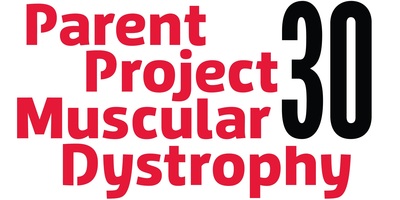Parent Project Muscular Dystrophy (PPMD), a nonprofit organization leading the fight to end Duchenne muscular dystrophy (Duchenne), announced plans to award Dr. Kanneboyina Nagaraju and his team at Binghamton University’s School of Pharmacy and Pharmaceutical Sciences a $329,000 grant.
|
HACKENSACK, N.J., /PRNewswire/ -- Parent Project Muscular Dystrophy (PPMD), a nonprofit organization leading the fight to end Duchenne muscular dystrophy (Duchenne), announced plans to award Dr. Kanneboyina Nagaraju and his team at Binghamton University's School of Pharmacy and Pharmaceutical Sciences a $329,000 grant. Binghamton is one of the four University Centers in the State University of New York system. Dr. Nagaraju will continue his work examining the body's immune response to the production of new dystrophin protein, resulting from exon skipping and gene therapy treatments.
Duchenne is the most common fatal genetic disorder diagnosed in childhood, affecting approximately one in 5,000 live male births. Duchenne is caused by a change in the dystrophin gene. Without dystrophin, muscles are not able to function or repair themselves properly. While there is currently no cure for Duchenne, both exon skipping and gene therapy are being pursued as potential treatments that may slow the progression of Duchenne, while increasing dystrophin levels. Dr. Nagaraju hopes to understand the effect these treatments may have on the body's immune system. "For almost 25 years, PPMD has funded research aimed at treating Duchenne and finally therapies like exon skipping and gene therapy are near term. Now we need to look ahead to optimize the effectiveness of these promising new therapies," according to Abby Bronson, PPMD's Senior Vice President of Research Strategy. "We believe there is great value in the work Dr. Nagaraju and his team are doing – work that could improve the post-treatment outcome of these potential therapies." Dystrophin restoration in people with Duchenne has been the focus of a number of treatments in recent years. Treatments that have emerged include exon skipping and gene therapy, which aim to restore production of dystrophin. Through these treatments, truncated versions of the dystrophin protein can be expressed within the muscle. Further investigation into the mechanisms that influence both the distribution and the extent of dystrophin restoration will be key to optimizing these treatments. While not currently well understood, one proposed influencer of treatment effectiveness is the body's immune response to the production of new dystrophin protein. To better understand the role of the immune system on dystrophin restoration, Dr. Nagaraju will explore the combination of exon skipping or micro-dystrophin gene therapy with an immunosuppressive treatment, using one of the following drugs:
Rituximab is currently an FDA-approved drug for use in Rheumatoid Arthritis and non-Hodgkin's lymphoma. This off-label use would seek to suppress the immune response via inhibition of mouse B-cells, one of the two main cell types involved in the immune response. B-cells produce antibodies, which act as signals to the immune system. By preventing antibody production against the newly expressed dystrophin, the amount of dystrophin generated in muscle and resulting muscle function may be improved. Like rituximab, abatacept is an FDA-approved drug for Rheumatoid Arthritis. Abatacept helps to prevent activation of T-cells, the other main cell type involved in the immune response. By disrupting the immune response through T-cell inhibition, rather than just preventing antibody production, abatacept has the potential to have greater effect on increasing dystrophin expression than rituximab. The last series of experiments will investigate three different anti-inflammatory drugs: prednisolone, vamorolone, and eplerenone. Their impact on dystrophin restoration after treatment will be evaluated. Each drug's effect on inflammation, immune response modulation, and muscle function will be compared. "Long-term immunological consequences of dystrophin gene correction and gene replacement therapeutic strategies in Duchenne are currently unknown," said Dr. Nagaraju. "This project will explore interventions that modulate inflammation and immune response after gene and exon skipping therapies. I am really excited that PPMD recognized the merits of the studies proposed in this grant." Bronson adds, "Both exon skipping and gene therapies hold great promise as treatments for Duchenne. Like Dr. Nagaraju, PPMD believes that it is important to support those therapies with additional treatments that create a more favorable environment in the body and could improve their impact." About Parent Project Muscular Dystrophy Duchenne is a fatal genetic disorder that slowly robs people of their muscle strength. Parent Project Muscular Dystrophy (PPMD) is the largest most comprehensive nonprofit organization in the United States focused on finding a cure for Duchenne muscular dystrophy—our mission is to end Duchenne. We invest deeply in treatments for this generation of people affected by Duchenne and in research that will benefit future generations. We advocate in Washington, DC, and have secured hundreds of millions of dollars in funding. We demand optimal care, and we strengthen, unite and educate the global Duchenne community. Everything we do—and everything we have done since our founding in 1994—helps people with Duchenne live longer, stronger lives. We will not rest until every person has a treatment to end Duchenne. Go to www.ParentProjectMD.org for more information or to learn how you can support our efforts and help families affected by Duchenne. Follow PPMD on Facebook, Twitter, and YouTube.
SOURCE Parent Project Muscular Dystrophy |





